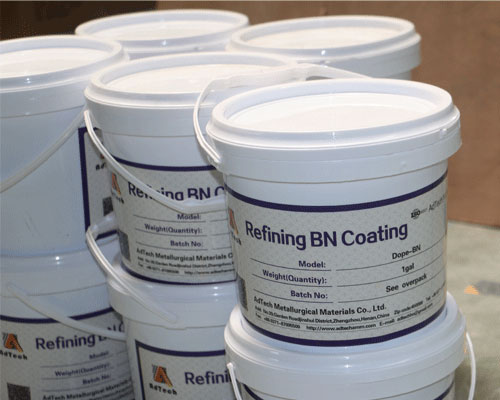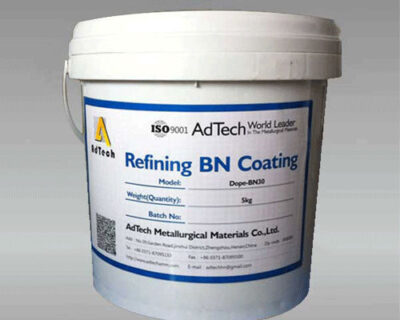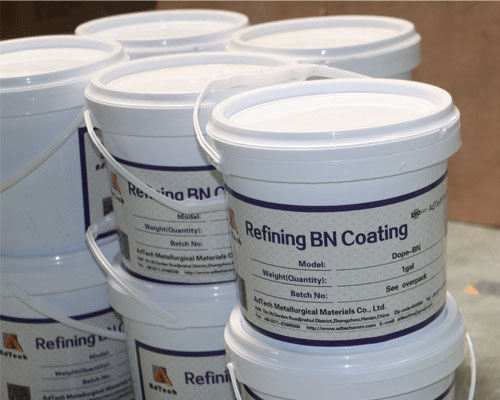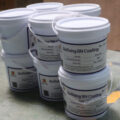Boron nitride paints can improve the performance of refractory materials, it is mainly used to the surface of the refractory material or penetrating the working layer of the refractory material. The boron nitride paint has boron nitride and boron oxide. The particle size of boron nitride is between 20 microns and 50 microns, and the mass content of boron nitride is 30%~85%. The mass content of boron oxide is between 2% and 5%. The boron nitride coatings can be used with refractory materials made by AdTech, such as Alumina Porcelain Rod, ceramic fiber tubes, Ladle Shroud, flow channels, etc.
BN Coating for Aluminum Casting
In the field of refractory materials, when boron nitride coating is used, it is generally applied directly on the surface of the refractory product, and it is used directly after drying. The process is relatively simple and the operability is strong. The disadvantage is that the coating is not hardened. If the use temperature is lower than the sintering temperature of the paint, the strength of the coating is not high, and it is easy to powder and fall off.
When the temperature exceeds 470°C, boron oxide is transformed into a liquid state. The boron oxide melt has a high viscosity, improves the adhesion between boron nitride and the base material, and prevents falling off. The boron oxide melt exists around boron nitride, and the entire coating and substrate are in a liquid-solid sintering state, which can promote the sintering of boron nitride and the substrate at low temperature. When the temperature reaches 1000°C, boron oxide completes nitridation to form boron nitride molecules. The boron nitride molecules generated by this reaction have extremely high activity, which can promote the sintering of boron nitride in the middle and high-temperature stage.
The boron nitride coating is fired at 1600°C~1800°C and has a certain strength. When it is used in the environment below 1600°C, it will not cause the coating to fall off and powder. When applied in an environment above 1600°C, the coating will be further sintered, but due to the presence of large-grain boron nitride, it will not shrink too much due to dense sintering.

How to Use Boron Nitride Paint
1. Stir the boron nitride paint for 2 to 15 minutes.
2. Spread the boron nitride coating evenly on the surface of the substrate or immerse it in the working surface of the substrate.
3. Place the coated substrate in a drying oven and dry at 110°C for 2 to 5 hours.
4. The dried substrate is put in an ammonia gas furnace, and the nitrogen gas is reacted at 900°C to 1000°C for 2 hours to 5 hours.
5. Pass nitrogen protection, continue to heat to 1600°C, and keep for 3 hours to 5 hours, the boron nitride coating is sintered and hardened.
6. Nitrogen protection, according to the material of the substrate, continue heating to the firing temperature of the substrate or complete the sintering.



